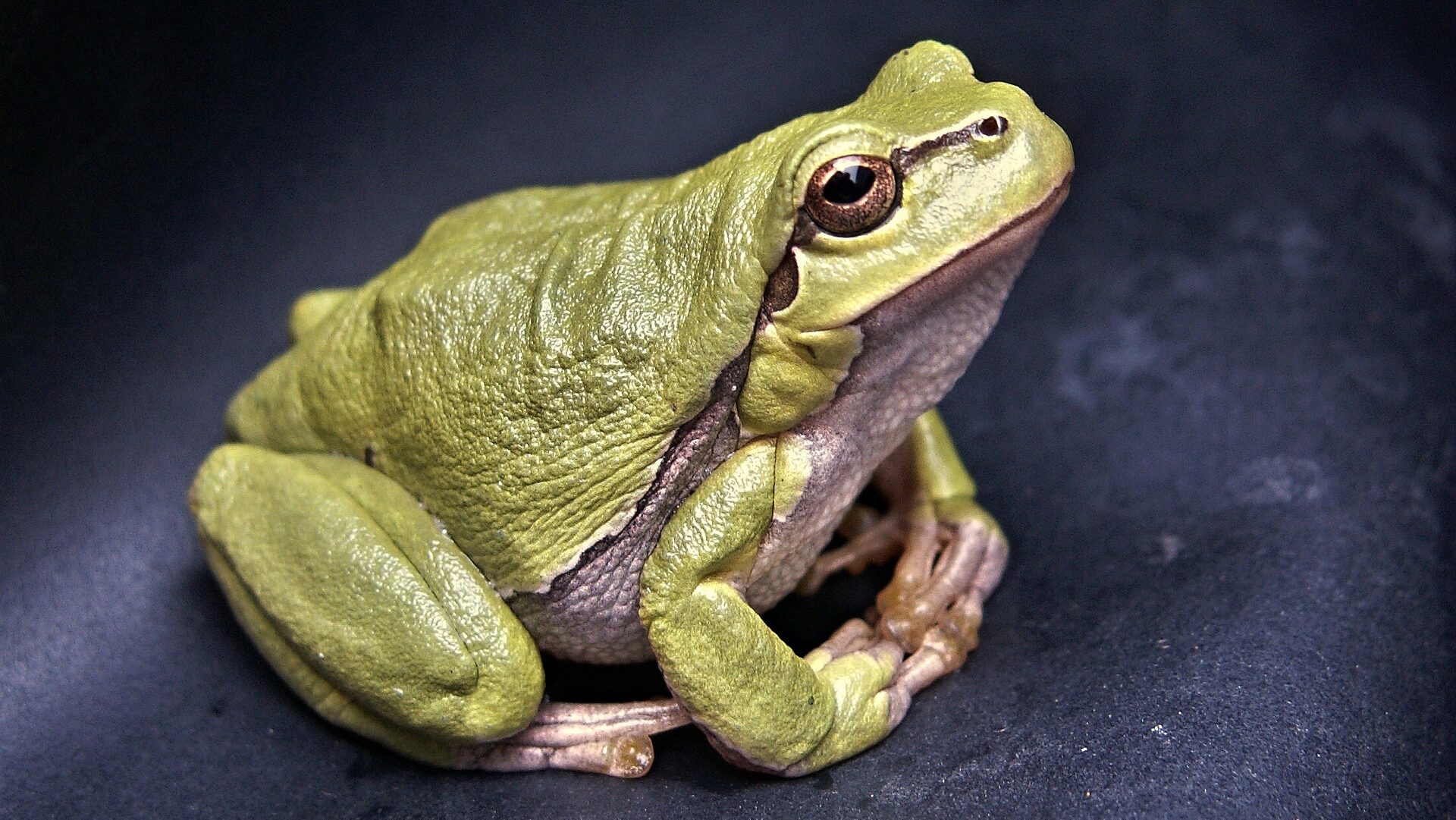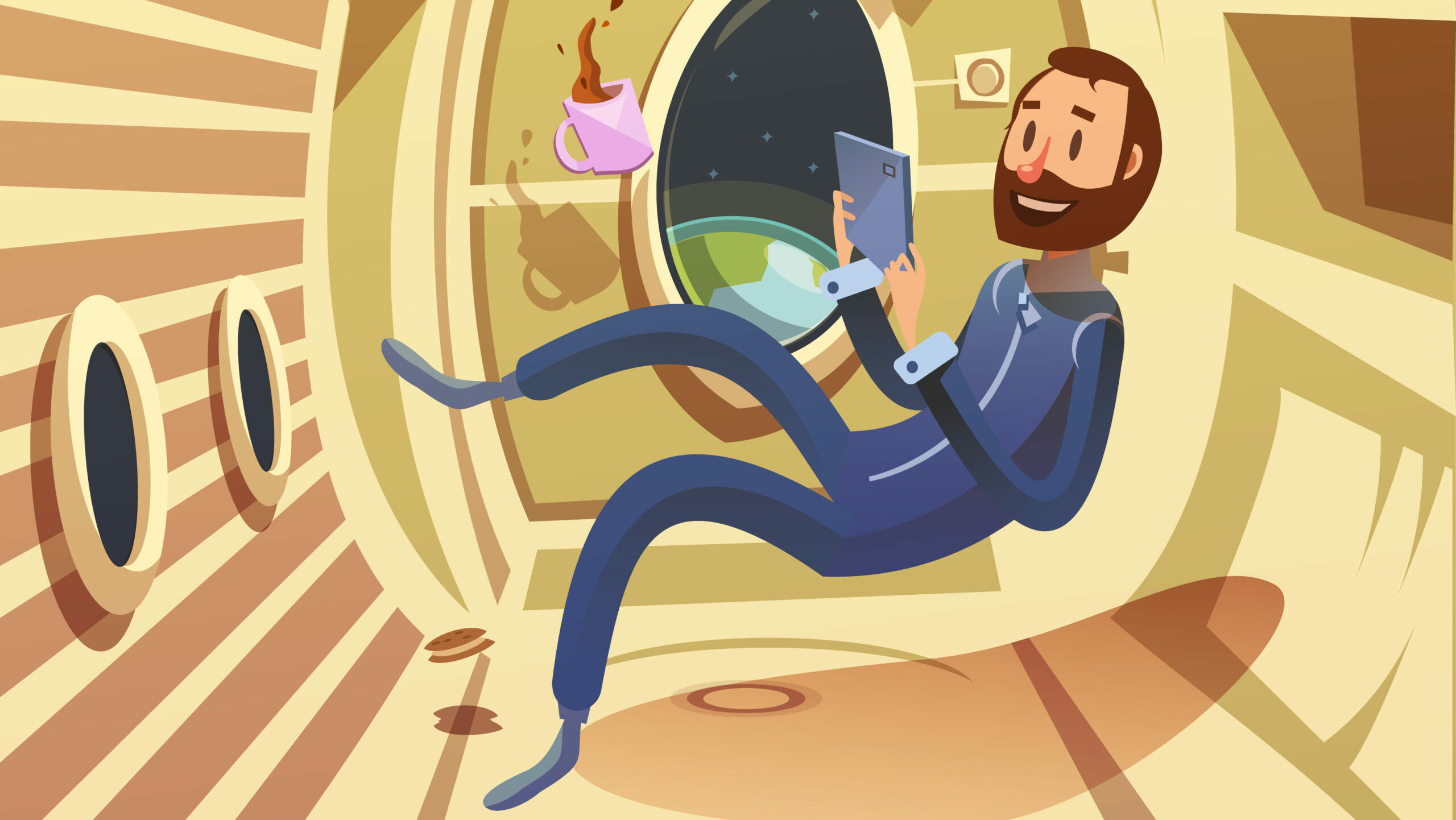Reading Time – 7 Minutes, Difficulty Level – 2/5
In 1994, NASA sent jellyfish to space to investigate how microgravity can impact their sense of balance. Scientists launched a jellyfish species Aurelia aurita on the Space Life Science-1 (SLS-1) mission on the Space Shuttle Orbiter Columbia at the beginning of their life cycle and carefully observed their gravity sensing receptors for approximately 9 days. In a fascinating outcome, the jellyfish essentially developed their own strange version of vertigo.
How Do Jellyfish Sense Gravity?
To better understand how a trip to space could impact a jellyfish, let’s take a closer look at the general life cycle of the A. aurita (Figure 1). You probably picture a jellyfish in its adult stage – as a translucent bell containing its body components and long tentacles covered with stingers. However, they actually start off looking quite different; once an adult releases fertilized eggs, the jellyfish develops into a stage called the “ephyra” – here, they can undergo several rounds of asexual reproduction called “strobilation”.
While the ephyrae strobilate, A. aurita’s normal development typically includes the formation of “rhopalia” near its bell, which are sensory structures that perceive light, gravity, and swim rhythms. The rhopalia have a polarity to them; at their distal ends, they have “statocysts” which are specialized nerve receptors that help an organism perceive its position within a gravity-based environment (Katsuki & Greenspan, 2013). These statocysts contain thousands of calcium sulfate hemihydrate crystals called “statoliths” (Becker et al, 2005). These statoliths can move downwards as the jellyfish swims which activates nerve activity to distinguish up from down.
For this experiment, understanding the timing of ephyra development is very important. Specifically, approximately 72 hours after strobilation, they typically produce eight rhopalia; after 120 hours, they are elongated, with approximately 10-30 statoliths per rhopalium (Spangenberg et al, 1994).

The Mission
So what happens to these graviceptors when an organism develops with no gravity? NASA set out to investigate this by looking at over 25,000 polyps in artificial seawater by comparing the development of A. aurita ephyrae who spent 9 days in space versus a control group of ephyrae on the earth. But within the earth group and space group, scientists further divided the polyps into subgroups. They wanted to see differences in statolith development based on when strobilation took place too; so they created 3 subgroups: L(Launch)-24, L-48, and L+8. L-24 polyps were induced to strobilate 24 hours before launch while L-48 were induced 48 hours before launch, and examined 3 hours after flight. The L+8 ephyrae were induced 8 hours post flight and examined on Mission day 8 (approximately 192 hours after flight – or 184 hours after induction). The scientists could induce strobilation in the ephyrae by controlling their temperature and exposing the polyps to iodine or thyroxine – chemical activators of strobilation.
Interestingly, there was no significant difference between the number of rhopalia that developed between earth developed and space-developed ephyrae, even amongst the different strobilation times. All ephyrae developed approximately 8 rhopalia.
However, some differences arose on the level of the statoliths. There was a significantly higher number of statoliths per rhopalium in the L+8 space-induced ephyrae, producing about 23.18 statoliths per rhopalium, than its earth-induced counterpart, with an average of 17.94 stat/rhop (Figure 2).

What about the ephyrae who were strobilated on earth? Both the L-24 and L-48 subgroups on earth and space showed no significant difference in statolith numbers. They also showed regular pulsing behaviour, with a rate of abnormality reaching only 2.9%.
However, the L+8 strobilated space ephyrae showed a significantly higher rate of pulsing abnormalities; at 18.1%, this subgroup’s abnormalities included incomplete pulses, spasms, uncoordinated or out-of-sync arms, after-twitches and “wave” motions (Spangenberg et al, 1994).
Although these results did not necessarily affect the jellyfish’s survival in space, it did suggest the importance of environmental effects on development; the jellyfish who underwent strobilation on earth were able to develop relatively normally, while those whose strobilation occurred after entry into space had abnormal statolith development and pulsing behaviour. This may suggest that certain environmental stimuli are fundamental to proper development, such as the presence of gravity.
What about Humans?
Humans have developed a complex vestibular system, housed in your inner ear, which contains receptors similar to the statolith called “otoliths”, and although they are made of calcium carbonate, they serve a similar function. They are surrounded by a gelatinous matrix; when you move, they activate and exert their weight into the matrix, sending information to specialized hair cells which help a person orient themselves in space and maintain their balance. These otoliths can impact various body functions including breathing and orientation.
We already know that the actual act of traveling to space can affect an astronaut’s vestibular system; for example, liftoff from the earth will typically exert a force of three times the earth’s gravity, or 3g, upon a human, leading many astronauts to report a reduced ability to read written text or false sensations of certain sounds. When in the reduced gravity environment of space, otoliths stop receiving gravitational information and the person experiences “space adaptation syndrome”. Often some astronauts will become spatially disoriented, experience motion sickness, and even vomit. However, they are able to overcome and acclimate to this environment within about two to four days. Astronauts are also able to re-acclimate when they re-enter the 1g environment of the earth.
But what if we are to become permanent residents of space one day? What if humans reproduce while aboard a spacecraft? What if they reproduce on a planet with a different gravitational force, such as the 0.38g of Mars? Although jellyfish are quite different from us, we have a homologous structure that senses gravity – we could potentially see similar effects in the development of our species if we do someday reproduce elsewhere in the universe. Possibly “abnormalities” – or the next saga of human evolution.
REFERENCES
- Algueró-Muñiz, M. (2017). Zooplankton community responses to Ocean Acidification (Doctoral dissertation, Ph. D. thesis, Universiy of Bremen, Bremen. Available at: https://elib. suub. uni-bremen. de/peid).
- Becker, A., Sötje, I., Paulmann, C., Beckmann, F., Donath, T., Boese, R., … Epple, M. (2005). Calcium sulfate hemihydrate is the inorganic mineral in statoliths of Scyphozoan medusae (Cnidaria). Dalton Trans., (8), 1545–1550. doi:10.1039/b416246c
- Bogle, J. M. (2017). Otoliths in Space! The extreme environment of space flight significantly affects the vestibular system. What happens and how does it recover back on Earth?. The ASHA Leader, 22(10), 14-15. https://doi.org/10.1044/leader.AEA.22102017.14
- Katsuki, T., & Greenspan, R. J. (2013). Jellyfish nervous systems. Current Biology, 23(14), R592-R594
- Spangenberg, D. B., Jernigan, T., Philput, C., & Lowe, B. (1994). Graviceptor development in jellyfish ephyrae in space and on earth. Advances in Space Research, 14(8), 317–325. doi:10.1016/0273-1177(94)90418-9
- Spangenberg, D. B., Jernigan, T., McCombs, R., Lowe, B. T., Sampson, M., & Slusser, J. (1994). Development studies of Aurelia (Jellyfish) ephyrae which developed during the SLS-1 mission. Advances in Space Research, 14(8), 239–247. doi:10.1016/0273-1177(94)90408-1

A clinical research coordinator of neurology studies and a graduate from an Honours BSc majoring in Neuroscience and Immunology, based in Toronto. A lifelong reader and writer. A huge believer in the importance of finding your voice and letting it express your curiosities.







